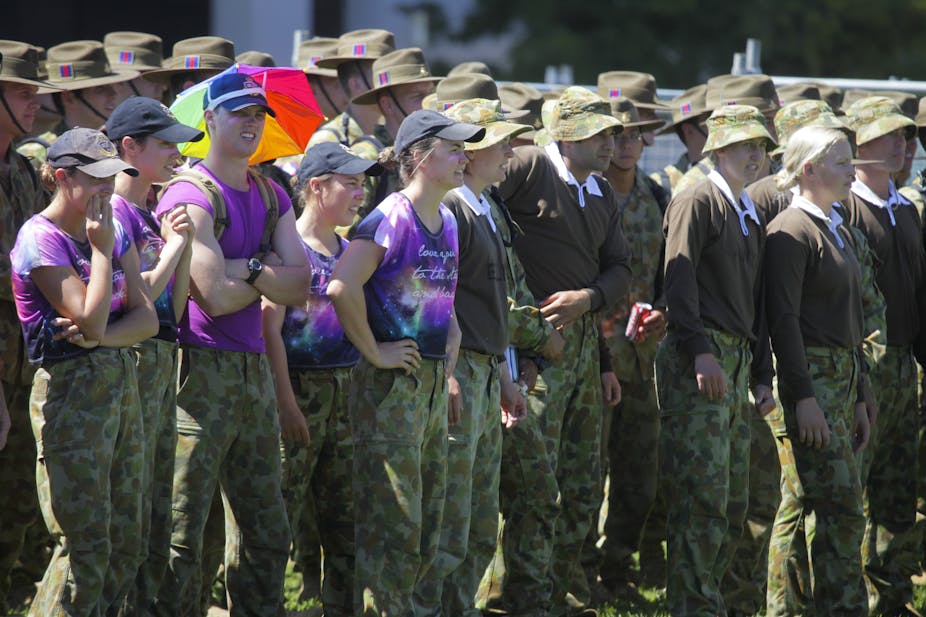Situated in Melbourne’s busy Arts Precinct, by the Yarra and the Botanical Gardens, is Victoria’s newest museum and the first museum in the country dedicated to Australian women’s history.
The Museum of Australian Women’s History isn’t as large as the Women’s Museums in Bonn, San Diego or Hanoi, but the use of space within the museum and the slick design aesthetic more than make up for its small size.
The brainchild of several wealthy Australian philanthropists and designed by three of Australia’s most prominent female architects, the museum has been created to celebrate the lives and achievements of Australian women.
From the outside, the museum looks like a white modernist box, yet, on stepping into the building, one finds that the interior is comprised of gently curved walls, some with smaller rooms tucked behind them, others which lead its patrons on strange and unusual paths.
The floors are organised into distinct categories – level one is named “Everywhere” and features the way in which designers, architects and the craft industry are incorporated into Australian life. Level two is “The Stage” where fashion sits alongside the fine arts, literature and entertainment. Level three is “Political Incursions” and highlights the role that Australian women have played internationally. Level four is reserved for Touring Exhibitions.
On level two, works by female visual artists are interspersed with mannequins wearing designs by some of Australia’s best-known women designers; Carla Zampatti, Easton Pearson, sass and bide, Willow, Fleur Wood, Jenny Kee, Leona Edmiston, Alannah Hill, Ruth Tarvydas and Collete Dinnigan.
Alongside the mannequins are the works of visual artists such as Helen Oglivie, Emily Kngwarreye, Margaret Preston, Thea Proctor, Ethel Spowers, Tracey Moffat, Rosalie Gascoine, as well as Davida Allen’s infamous paintings of Sam Neill.
Visitors might be embarrassed to confess that most of these names are unfamiliar, but the discrete poster at the end of the hallway points out that most galleries in the world, including well-known galleries such as the Museum of Modern Art (MOMA) and the Guggenheim, feature very few works by women artists. At New York’s MOMA, only 5% of the permanent collection is the work of women artists.
At the end of the hallway is a small library with bookshelves full of what appear at first glance to be multiple copies of clothbound books with the names of some of our most famous women writers on the spine: Elizabeth Jolley, Ruth Park, Judith Wright, Stella Miles Franklin, Katharine Susannah Prichard, Dorothy Porter.
These books can all be taken off the shelves and each of them contains only a few pages of notes – biographies, lists of works and awards and achievements. Another library wall features more contemporary women writers: Sally Morgan, Simone Lazaroo, Gail Jones, Kate Grenville, Geraldine Brooks, Drusilla Modjeska, Cate Kennedy, Helen Garner and Nikki Gemmel (amongst many others).
On the first floor, visitors are confronted with a wall covered in pictures of the faces of Indigenous women who had their children forcibly removed. You can hear the voices of indigenous women, telling their stories.
Of course, anyone familiar with Melbourne will have worked out by now that the Museum of Australian Women’s History does not exist.
There is, in fact, no museum in Australia dedicated to women’s history. In Australia, like in New York, women are paid minimal attention in most museums; and there is no space that belongs exclusively to celebrating Australian women.
Until such a space is built, women will continue to exist only on the fringes of Australia’s cultural narratives. A sad thought as we celebrate International Women’s Day.

